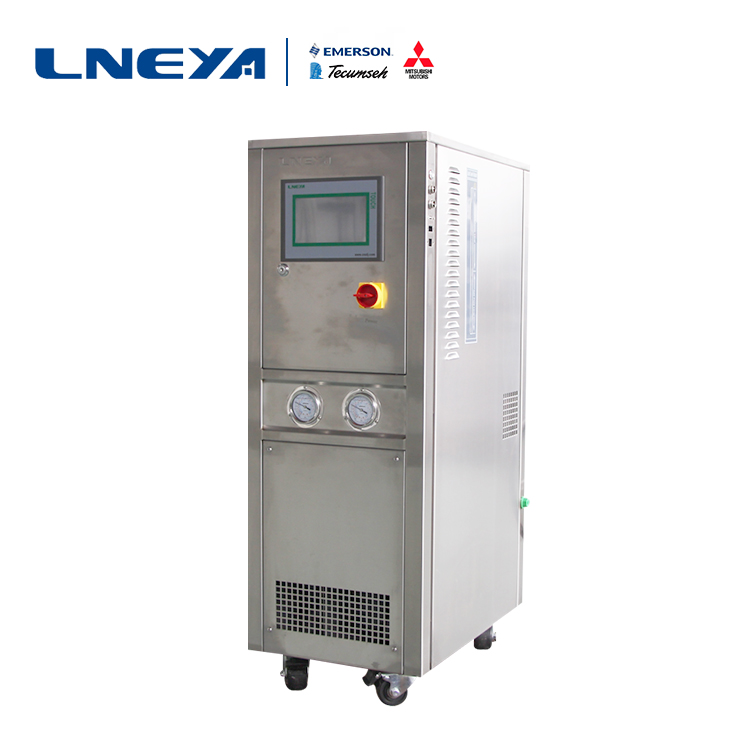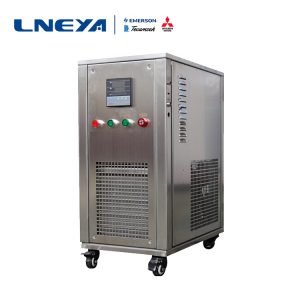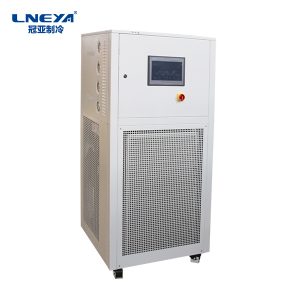Description of refrigeration principle in semiconductor wafer temperature control
In the operation of the semiconductor wafer temperature control refrigeration system, a state transition of a certain working fluid is used, and the necessary heat Q0 is extracted from the heat source of a lower temperature, and the heat Qk is sent to the heat source of the tropical heat through a storage process of the consumption power W. In this process, Qk = Q0 + W is taken from the conservation of energy.
In order to achieve temperature control of semiconductor wafer temperature migration, a process of lowering the temperature of the refrigerant to a lower temperature environment is forcibly performed, and heat is continuously extracted from the object to be cooled, and this is achieved within the boundary of the refrigeration technique. The process has several basic steps: phase change refrigeration: the use of liquid evaporation at low temperatures or the dissolution or sublimation of solids at low temperatures to extract heat from the object being cooled. Normal air conditioners are all such cooling steps. Gas expansion refrigeration: The high pressure gas can reach a lower temperature after adiabatic expansion, so that the low pressure gas can be reheated to cool. Gas eddy current refrigeration: After the high pressure gas is expanded by the vortex tube, it can be respectively hot and cold air flow, and can be cooled by the reheating process of the cool air flow. Thermoelectric cooling: The direct current is passed through the semiconductor thermopile, which can have a cold effect at one end and a thermal effect at the other end.

The temperature of the semiconductor wafer is controlled during operation. At the high temperature, no heat transfer medium evaporates, and it can be realized without pressure. -80 to 190 degrees, -70 to 220 degrees, -88 to 170 degrees, -55 to 250. Degree, -30 ~ 300 degrees continuous temperature control. The principle and function of semiconductor wafer temperature control have many advantages for the user: Because only the heat transfer medium in the expansion chamber is in contact with the oxygen in the air (and the temperature of the expansion tank is between normal temperature and 60 degrees), the reduction can be achieved. The heat transfer medium is oxidized and absorbs moisture in the air.
In the semiconductor wafer temperature control, the principle of refrigeration is as shown above. When the user controls the temperature control of the semiconductor wafer, the user should pay attention to the principle of refrigeration, and better operate the semiconductor wafer temperature control after understanding.
Related recommendations
-
Won the second place in the 2022
1608On November 18, 2022, it was sponsored by the Jiangsu Provincial Association for Science and Technology, the Provincial Taiwan Affairs Office, the Provincial Department of Industry and Information Technology, the Provincial Department of Agricultu...
View details -
LNEYA ultra-low temperature bath safe operation instructions
948Ultra-low temperature thermostats use more equipment in the pharmaceutical and chemical industries. At the beginning of the new year, each operator needs to pay attention to safety operations, and safely and efficiently operate ultra-low temperatu...
View details -
Does the chip lead bonding process require a temperature control system?
896The chip lead bonding process indeed requires precise temperature control, so temperature control systems are usually equipped to ensure process stability and yield. The following are the importance and application scenarios of temperature con...
View details -
Lneya Semiconductor Refrigeration Heating Circulation Wind System Test Description
1238There are many test items in the refrigeration and heating circulating air system for semiconductors. So, how much do users know about the out-of-channel testing of the semiconductor refrigeration and heating circulating air system? The out-of-cha...
View details
 LNEYA Industrial Chillers Manufacturer Supplier
LNEYA Industrial Chillers Manufacturer Supplier













